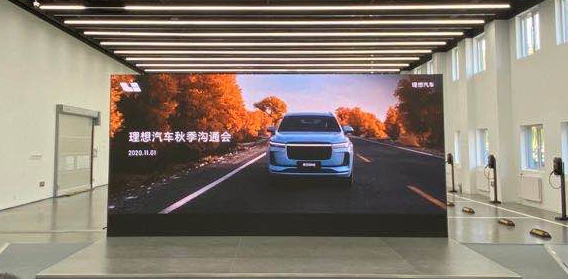I, as a representative of car owners, attended the IDEAL Automobile Autumn Communication Conference in Beijing.
Although many people have already watched the conference through live streaming on the IDEAL APP, and various media outlets have published articles about the communication conference, even the transcript of the Q&A session at the end of the conference is all over the internet. However, I still want to share some of my thoughts from the perspective of a car owner.
To put it simply, the communication conference on Sunday talked about three things: OTA 2.0, truck collision warning, and hardware optimization upgrade.
Let’s start with the hardware optimization upgrade that received the most attention.
The hardware optimization upgrade includes two things: “Front suspension lower arm ball pin upgrade” and “Chassis rear protective plate upgrade”.
-
Front suspension lower arm ball pin upgrade: Upgrade to a front suspension lower arm ball pin with a detachment force of 50kN. The detachment rate of the ball head after a collision is reduced to within 3%, reaching the same level as the same level of vehicle models.
-
Chassis rear protective plate upgrade: Upgrade the chassis rear protective plate from glass fiber material to metal material.
Regarding the hardware optimization upgrade, some people are focused on whether the “front suspension lower arm ball pin upgrade” is considered an “upgrade” or a “recall.”
If we put a positive spin on it, we can say that IDEAL has proactively improved its product. After all, the vehicle is entirely trouble-free under normal driving conditions. The original lower arm ball pin had no problem, even if driving to Tibet or Ali.
Conversely, we can also question whether this is a passive action taken by IDEAL in consideration of subsequent sales after the occasional accident report made potential car owners worried.
If we purely speculate about the motive, this debate will never end. One detail worth noting is that some media outlets asked IDEAL about this issue after the conference, and the response was: “After applying to and obtaining approval from the quality inspection, the approval received was an upgrade, not a recall.”
As a car owner, I personally don’t care much about the definition of these words. What I care more about is whether the company can face the problem positively and provide a solution. At the communication conference, IDEAL publicly announced the entire upgrade decision-making process, explaining that there was indeed a misjudgment in the previous phase. In the Q&A session, facing a sharp question from Hu Ge, a car owner in Shenzhen, Li Xiang (IDEAL CEO) also admitted frankly that there were indeed defects in the previous ball pins.
Although the company’s admission of fault may be misunderstood and even maliciously interpreted by the outside world, it is reassuring for car owners. “Sincerity” is the high-frequency evaluation word I see in the car owners’ group.## Translation
Translate the following Chinese Markdown text into English Markdown text in a professional manner. Retain the HTML tags inside the Markdown and only output the results.
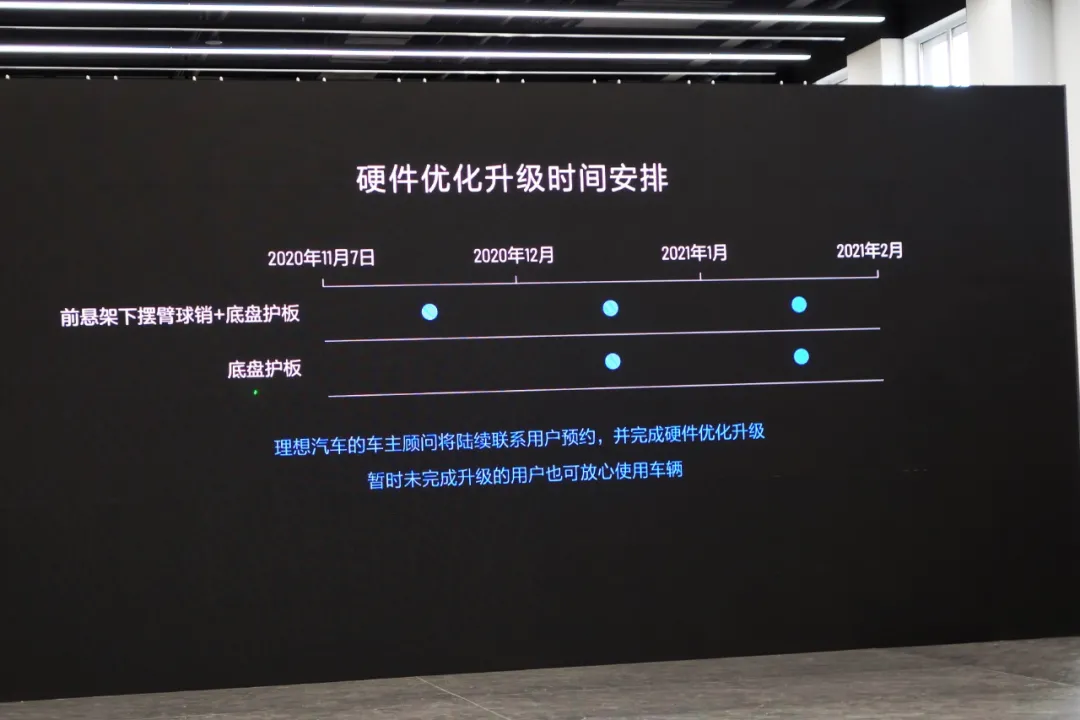
Except for vehicles delivered on November 1st, other delivered vehicles will have at least one hardware optimization and upgrade project. With so many vehicles requiring hardware upgrades, coupled with regular maintenance and servicing, the after-sales service department will face considerable pressure.
So, I raised my own question on-site, whether there are corresponding measures in Ideal’s after-sales network construction and service improvement as sales increase?
The answer I got was that the after-sales department is recruiting heavily, and at the same time, it is also expanding the coverage of after-sales services. In terms of service guarantees, they will also be more flexible, and before a repair center is established locally, a direct sales team will be dispatched to the sheet metal spray center to provide services and ensure service quality.
Let’s talk about truck collision warning
Truck collision warning is a new feature that was introduced from October 30, primarily used in adaptive cruise control or lane-keeping assistance. It operates when the vehicle runs at speeds between 60km/h to 135km/h, where three danger scenarios will trigger an alert which includes danger to the front sides of the truck, the truck crossing the sidelines and the truck merging towards the front side of the Ideal vehicle. The system warns the driver with a red alarm on the instrument panel and issues an alarm prompt sound to remind the driver to pay attention to safety.
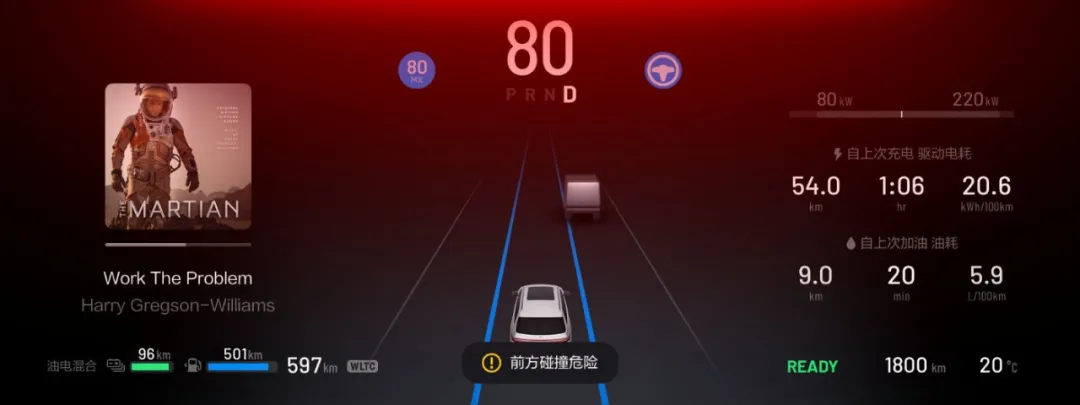
This functionality is like an assistant that always keeps a watchful eye over the driver’s side, similar to an L2 level of autonomous driving. Once it detects any anomaly, it immediately issues an urgent reminder. (Currently, the truck collision warning only provides an alarm, and future operations still require driver execution.)
Personally speaking, for drivers with good driving habits and a clear understanding of the boundary of L2 level autonomous driving, the role of such an assistant may not be significant because such drivers can always judge abnormal situations and control the vehicle in a timely manner in emergencies.
However, for drivers who drive without concentrating or who suffer from fatigue, this functionality is likely to save lives in emergency situations.
Currently, version 1.0 of the collision warning cannot be turned off. Some car owners who have installed it have given feedback, saying that it is a bit noisy. Regarding this, Li Xiang said that the function is just being launched and will tend to be more conservative. Future updates will add a function switch. At the same time, the alarm strategy will also continue to be improved. Furthermore, the active braking function will be constantly updated after the cargo truck merges to a certain extent, making this functionality more suitable for the actual road conditions in China.
Finally, let’s talk about OTA2.0“`markdown
OTA 2.0 was supposed to be the focus of yesterday’s meeting, but due to the high amount of attention on hardware optimization upgrades, it was unfortunately overshadowed.
For the specific upgrade details of OTA 2.0, please refer to the official introduction video above. The video is very detailed, so I won’t go into too much detail here. Among all the update contents, I will discuss a few that have left a deep impression on me.
In-vehicle viewing of driving recorder
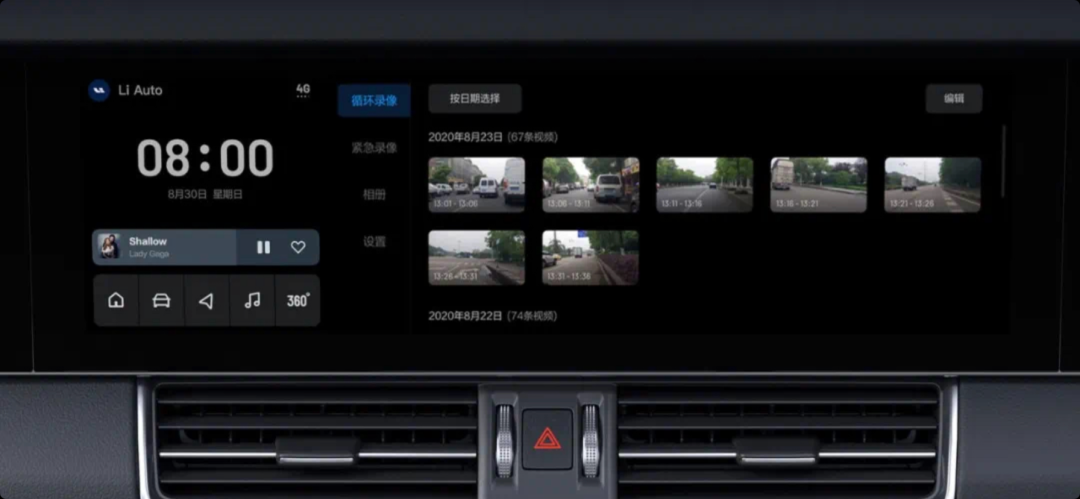
In-vehicle viewing of the driving recorder is definitely the most highly demanded function in OTA. Now you can finally watch your driving recorder videos in your car, and various mobile phone card readers can be retired.
One thing I am curious about with this function is whether there are any limitations on the video format of the storage card. Some savvy car owners are already planning to copy movies onto their storage cards, and then use the driving recorder’s playback function to watch movies in their cars.
Starting reminder for front vehicles

This is a practical feature for waiting at red lights. Many people like to lower their heads and play with their phones while waiting at red lights, and completely miss when the light turns green. This can lead to honking from the car behind, or more serious consequences such as being penalized for obstructing traffic. Of course, for safety reasons, it’s better not to use your phone while driving.
ACC/LKA speed reduced from 15 km/h to 0 km/h
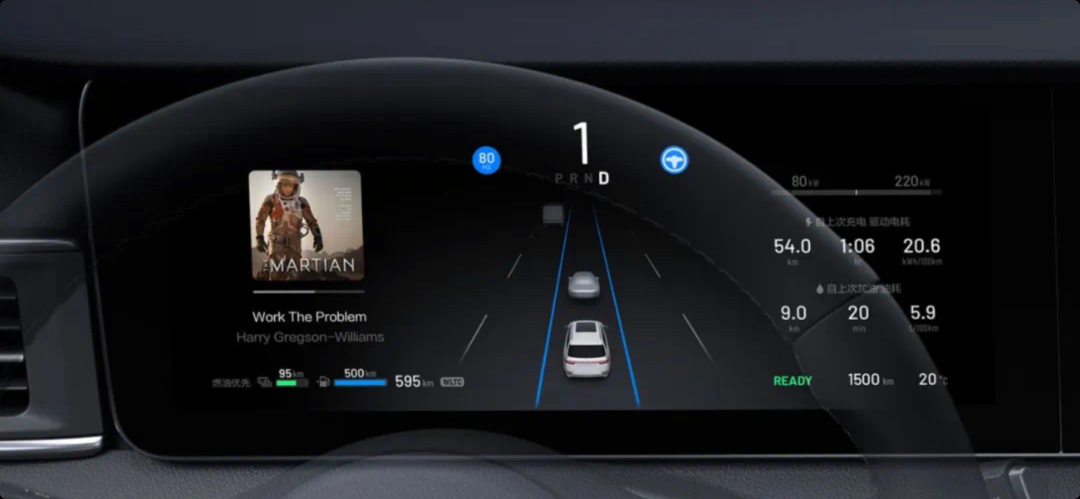
The main new feature is the reduction of LKA activation speed from 15 km/h to 0 km/h (the activation speed of ACC was previously 0 km/h). This means that LKA can now be activated at any time during congested road conditions, without having to first increase the vehicle speed.
Remote real-time surround view photography
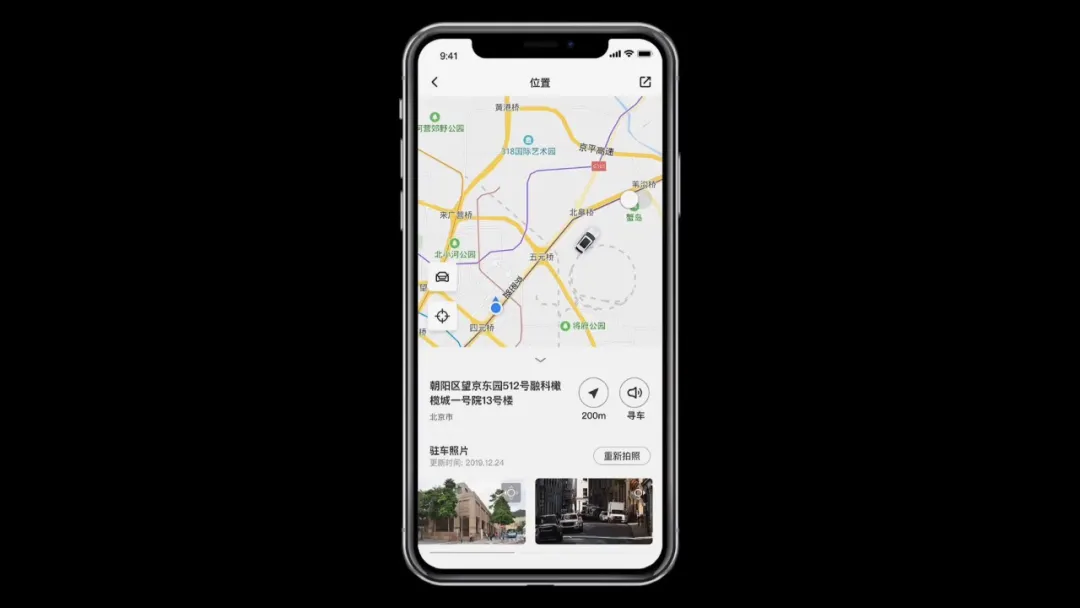
“`### ACC Speed Memory Function
The previous ACC speed memory function would still execute the memory speed within the effective time even if the current speed and the memory speed differ greatly. This function may have safety hazards for drivers who are not familiar with it, so it was cancelled in the later OTA. Now the ACC speed memory function is re-launched, but what differences will it have compared to the previous version?
Power Nap Mode 2.0
Currently, in the power nap mode, the seat automatically restores itself when the mode ends. Sometimes, when the driver is dozing off, the backrest suddenly rises and startles the person. I suppose version 2.0 will specifically optimize this issue.
Among all the updated features, what attracts me the most is the full-duplex free dialogue voice in the version 2.2 teaser. After XPeng launched their full-scene voice, I especially envy the continuous dialogue function of their voice assistant.
A good vehicle voice function should be able to help the driver and passengers complete all kinds of operations more conveniently in various scenarios in the car, thereby improving efficiency. If the continuous dialogue function is used to set navigation, play music, and turn on the air conditioning, the car can complete the operations in one breath without any key operations, which is much more convenient than doing it manually.
Just as I was about to finish writing this article, I received a call from Ideal’s 400 customer service, contacting me to make an appointment for hardware upgrade. When the car goes to the delivery center next week for the hardware upgrade, the beta testing of version 2.0 should also start soon. Come to think of it, November is indeed quite anticipated.
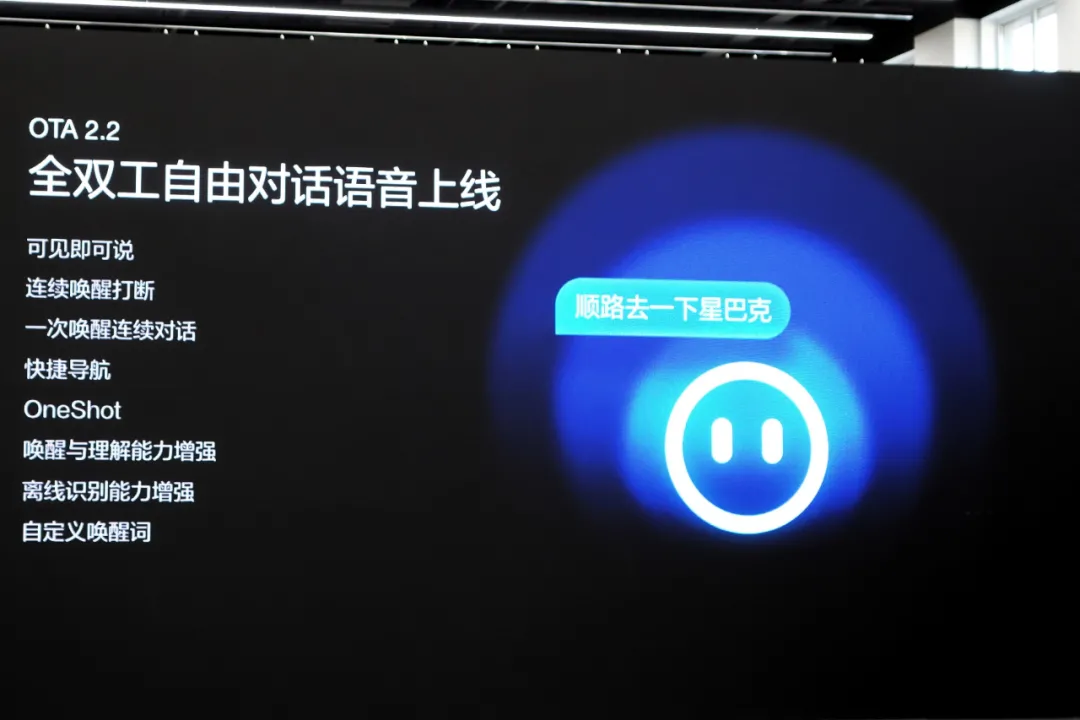
This is also a quite practical small function. However, in the locked state, when the rearview mirror is folded, it may affect the angle of the rearview mirror camera. I wonder how the remote real-time surround photo is handled. Would they take the photo after reopening the rearview mirrors or do they deal with it in some other way?
This article is a translation by ChatGPT of a Chinese report from 42HOW. If you have any questions about it, please email bd@42how.com.
